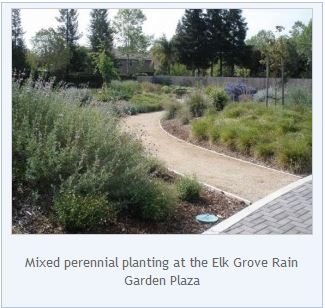A plant's ultimate goal is to self-perpetuate in some way by making more of itself. Their life cycle, be it short or long, consists of building up vegetative growth, which in turn supports seed development and other methods of 
Plant life cycles fall into three broad categories: annual, biennial, and perennial. Words that often accompany these terms are “herbaceous” or “woody”, a reference to stem characteristics. Woody stems have hard, fibrous growth whereas herbaceous stems do not.
Annuals
Annuals complete their life cycle in one growing season. Most are small and best used in borders or to fill in spaces around permanent plants. Although annual wildflowers can re-seed, if you want your nursery six-pack of annuals to self-sow, make sure it isn't a sterile hybrid. Some annuals will not always come true from seed and need to be purchased as plants if you want a certain variety.
Biennials
Biennials complete their life cycle in two growing seasons, often going dormant in the winter, then sending up new vegetative growth and flowers the second year before dying. The most famous examples are cole crops such as broccoli and cabbage, which we often treat as annuals in the garden.
Perennials
This category of plants lives for many years, varying greatly in how long it takes to produce their first flowers/seeds and reach senescence (old age). Below are some of the major types of perennials:
Evergreens support foliage year-round, although they will shed leaves sporadically. Examples of evergreens include conifers, photinia, boxwood, and California natives such as Coffeeberry, Toyon, and Buckwheats. These should form the backbone of your garden, as they provide the basic structure around which your shorter-lived annuals and perennials are planted.
Deciduousperennials shed all their leaves when they go into winter dormancy. Examples include Crape myrtle, stone and pome fruit trees, and Valley oak. Plants that retain a branching, woody structure in dormancy add an architectural element to the winter garden.
Herbaceous perennials are a sub-set of deciduous perennials whose stems lack hard, fibrous growth. They die to the ground during dormancy, surviving underground as roots or bulbs. This can happen in winter (Peony, Coneflower, and California fuchsia) or in summer (Amaryllis and Blue-eyed grass). These plants are cut to the ground once the foliage has died back to keep the garden tidy. These tend to be the most showy plants (after annuals), but they are “blank” in dormancy so it's good to be sparing with them in the garden.
Semi-deciduous plants lose some of their leaves in either winter or summer. In California, many plants have adapted to the long dry season by dropping foliage to conserve water.
It's important to point out that plants can behave differently, depending on what climate they are being grown in. For instance, tomatoes are annuals in the Central Valley but are perennials in their native land (Mexico). When reading plant descriptions, make sure to note the zone being used. If there are not specific descriptions for various zones, try doing more research using a different source. Sunset is a great source, as are other books written specifically for California gardens.
If you have a gardening related question you can contact the UC Master Gardeners at 209-953-6112. More information can be found on our website.